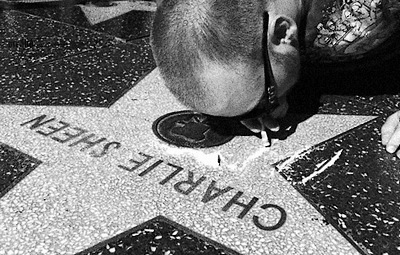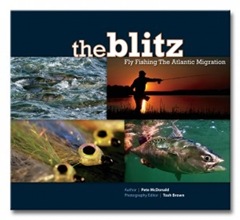I’m calling it the first in what I hope to be a long stream of tasty tidbits, given CalTrout has announced in their Streamkeeper’s Log that both Hat Creek and Fall River will be the recipients of some overdue ecosystem love …
Given that I lived, fished, and guided the area for a couple of decades, I can attest to what a unique and challenging fishery it used to be – how there’s no parallel for it this side of a bevy of well known Montana spring creeks, and perhaps this time we’ve learnt our lesson and are prepared to treat the creek with a bit of proper reverence …
Having spent a couple of undistinguished seasons as the CalTrout Streamkeeper for Hat Creek, with most my time pointing wardens at poachers, watching both disappear in a cloud of dust, and educating innocent folks that failed to read the forty-seven signs suggesting bait was not allowed on a “Single Barbless Artificial Only” resource, I figure a couple of cents worth of advice has been earned … just for old times sake.

While the managed trophy stretch of Hat Creek is three miles long, in its historical flavor – only a mile consistently holds fish.
Sediment blown into the creek from the Baum-Hat Canal sidewall blowout delivered a watershed killing load of sediment from which the creek was never able to recover. The Carbon Bridge flat water (pictured above) and similar slow moving stretches had their life-giving weed beds inundated with a sediment load that stifled all the bug life, removed all fish cover, and the population of large fish vanished.
Hat Creek is regulated by the flows from Powerhouse #2 – and cannot rid itself nor scour the stream bottom clean as its water level never varies. Some of the work they’re doing on the Colorado River might be worth noting – how they’re intentionally scheduling deluges from the dam to free the streambed of accumulated sediment. Opening the dam valve and releasing water down Hat Creek’s ancestral streambed might be assisted by the spillway just above the Powerhouse, but the far bank has already eroded with emergency releases and would need to be covered with concrete or something resistant to an extreme surge of water.
Cover the far side with a protective membrane, then divert the creek through that emergency spillway that bypasses the Powerhouse and let that uncontrolled jet of water work some magic.
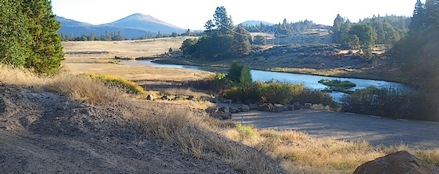
With fish holding in only a single mile, you’ll be doing the same with anglers, parking, and foot traffic. Once the magazines are blaring your successes to the masses touting your success with both fish and habitat, you’ll have hideous erosion issues. Muskrat burrows undermine most of upstream banks – and all those arriving anglers will be equipped with sticky rubber soles with hiking cleats – and those cleats are considerably more destructive than flat bottomed felt, and they’ll rip that soft bank out by the ton as they scramble into and out of the Powerhouse #2 Riffle.
We tore out a hundred feet of that bank using flat felt soles – cleated rubber is likely to be many times that …
The boulders and rip-rap you’ve put at the parking areas and the Powerhouse riffle is a great first step, but so long as the anglers concentrate only in a narrow area, rather than the full three miles of creek you’re offering, you need to plan for the worst possible case of foot traffic and nothing less.
Perhaps you’d consider a ban on wading anglers?
That’s a bold move.
It may be time for such drastic thinking, given that a competent caster should be able to do quite well on the open grassy plains that dominate the water above the 299 bridge.
In this day and age of wader-borne nasty, why not point at invasive species and let them shoulder the outcry and blame for wading restrictions? We’ve been primed by conservation organizations and vendors alike harping on how our collective unclean is destoying the world’s best fisheries. Copy the SIMM’s model, claim how much you’re thinking of the future – yet you’re solving plenty of now in the process.
Just saying is all, it’s worthy of some thought.
Clearing the upper half of trapped sediment can be matched only by making the stretch between the 299 Bridge Park and the Britton Weir hold fish. You tossed a couple handfuls of pebbles into the creek years ago – and that was simply not enough. The rocks weren’t big enough to make fish linger past the six inch mark – and while it was a good idea, the ROI never materialized.
You’ve got the better part of a mile of monotone current, twelve to thirty-six inches deep without any cover or underwater features outside of bank shade. Why not down some of those dead trees that litter the area – and drag them into the creek?
Most of the forest below the 299 bridge was crisped in a forest fire a couple years ago, and while the pine was logged, the owners left all the trash wood still standing, that dead timber is likely free for the taking – and you wouldn’t have to drag it more than a hundred yards.
Decay is supposed to be as good a remedy as anything, and thirty to fifty thick pine trees trunks should anchor a lot of fish – as well as add places for your waderless anglers to fish from. Add another big crop of large rocks to trap additional debris and induce some scouring water flows and perhaps you can turn that nondescript featureless cobble bottom into something more conducive to stimulating fish life …
… more importantly you have the ability to spread all those magazine reading anglers out over the full creek, which lessens the severity of all those feet climbing out of one parking lot.
And let’s not poo-poo the “magazine effect” – as articles claiming huge selective fish were available to match wits with is what drew those pilgrims that never set foot outside of the Powerhouse #2 riffle.
Despite their success and sophistication at taming a 12” fish that was still stunned from being caught by the guy next to them, it was the lure of “hard” that drew them – even though they lost their taste for difficult when bested by all those truly selective fatties lolling in the flat water below.
And the hardest lesson of all, that which you failed to learn last time, is that you will never be done – and you’ll never finish this project. Stream restoration is not a sprint, it’s a marathon, and you can’t blow all your cash making a brilliant showpiece – the envy of the entire state – then assume you never have to spend a dime on it again.
You will never be finished. Each success will bring more anglers that will destroy banks, fish, litter parking lots with water bottles, and crap in overflowing toilets. You will have to fund treatments commensurate with the angling pressures and perform more surgeries knowing that each of your successes has yielded some failure in your earlier planning.
There’ll be a ton of folks making a goodly living at your expense, why not insist that guides shoulder some of that fiscal burden – perhaps charging them for the right to take clients to exploit all that hard work?
Twenty bucks contribution per angler would generate enough to staff that parking lot washroom with a sommelier or washroom attendant – or buy a hell of a lot of fry …
… or fund a tank full of Rotenone, a vacuum cleaner, and a couple of chain saws that’ll be the cheap underpinnings of something truly great.
You had it right the first time, unfortunately you didn’t consider the destructive power and uncaring sensibilities of us anglers – who didn’t even have the courtesy to offer the Old Gal a towel once we were done.
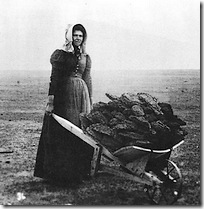 Louis L’Amour, prolific writer of cheap Westerns, described them as, “ …women to ride the ridges with – the kind of gal that walks beside her Man instead of behind him …”
Louis L’Amour, prolific writer of cheap Westerns, described them as, “ …women to ride the ridges with – the kind of gal that walks beside her Man instead of behind him …”
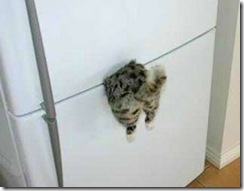


 Healthy living is browsing a web page that mentions, “eating whole foods” – and as I finish ingesting a whole box of donuts, I can snicker, “I do that.”
Healthy living is browsing a web page that mentions, “eating whole foods” – and as I finish ingesting a whole box of donuts, I can snicker, “I do that.”


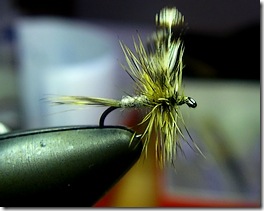 Tackle Trade World has a small article outlining the rapidity by which European salons adopted hair extensions and the
Tackle Trade World has a small article outlining the rapidity by which European salons adopted hair extensions and the 
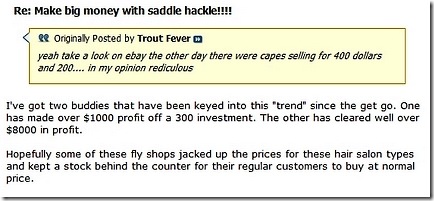
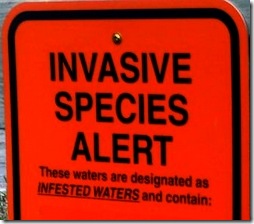 Given the volume of invasive species and how quickly they’re encroaching by both land and sea, at some point you throw up your hands and cease keeping score …
Given the volume of invasive species and how quickly they’re encroaching by both land and sea, at some point you throw up your hands and cease keeping score …